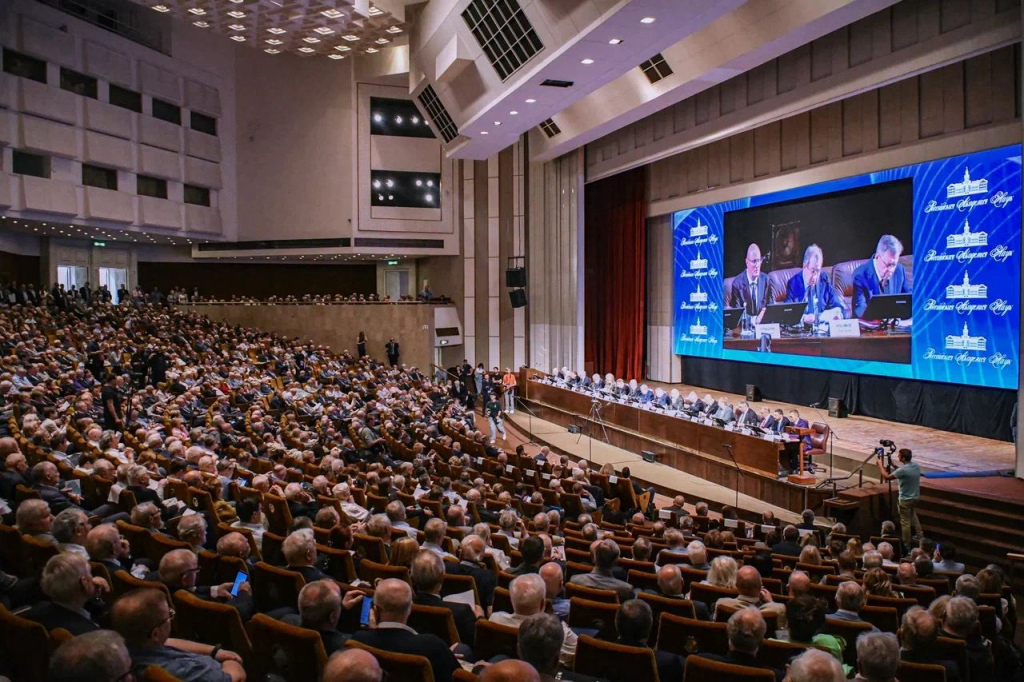We are the faculty about life and for life.
The Faculty of Biology and Biotechnology was founded in October 2018 with the support of the Russian Academy of Sciences. The aim of the Faculty is to train highly qualified specialists in the field of biology and molecular biotechnology as a response for the demand in the field of science (research centers, academic institutes, technology parks) and various sectors of the economy (pharmaceutical, medical, biotechnology industry, chemical industry, commercial structures operating in the field of biological sciences, etc.).
About the Faculty
News
-

-
-
February 11
Open Day: The Future Begins Here
-

January 31
New faces of the student council
Programmes
Departments
The laboratory is developing a new method of personalized drug therapy for cancer patients, which includes establishment of a three-dimensional culture of tumor organoids, followed by a personalized test of chemotherapeutic and targeted drugs to determine the most effective therapy for each individual patient.
Established in 2020, the Laboratory of Molecular Physiology studies the role of microRNA isoforms in the pathogenesis of intestinal diseases and develops new therapeutic approaches to intestinal condition treatment using microRNA isoforms. We collaborate with the National Medical Research Radiological Center, the Shemyakin–Ovchinnikov Institute of Bioorganic Chemistry of the Russian Academy of Sciences, and University Medical Center Hamburg-Eppendorf.
The aim of the department is to use the scientific and teaching potential of the leading IBCh researchers to organize a world-class scientific and educational center at the Faculty of Biology and Biotechnology.
Publications
-
Book
2023 Fifth International Conference Neurotechnologies and Neurointerfaces (CNN) 18-20 Sept. 2023
Cognitive and emotional load in the course of increasing the complexity of tasks leads to the activation of various parts of the autonomic nervous system (ANS) and can be accompanied by an increase in the efficiency of problem solving. An increase in cognitive load under the condition of high motivation is a stress factor and is expressed in a different reaction of the sympathetic and parasympathetic links in response to the load. This study explored the ANS reactions by measuring the pupil size of 61 healthy sub-clinical volunteers in response to the gradually increasing complexity of tasks. The experiment included 3 blocks of a combined visual search and 1-back task with six levels of difficulty. K-mean clustering method was used for the analysis. An increase in the complexity of the task from the first to the sixth level led to different dynamics of the pupil size in the three clustered groups. In one group, an intense high switchability and an active reaction with a large amplitude of changes were visible, in the second group the dynamics of changes was minimal, and a third intermediate group was also identified. Our results highlight individual differences in the reaction of the sympathetic and parasympathetic branches of ANS under cognitive workload depending on biometric and psychometric parameters.
IEEE, 2023.
-
Article
Extended movements of particles in stolons of colonial hydroids of the family Campanulariidae
The range of movement of food particles along the distribution system in colonies with a length of 8 stolon modules was studied in colonies of four species of hydroids from the Campanulariidae family (Gonothyraea loveni, Laomedea flexuosa, Obelia longissima, and O. geniculata). Visual scanning, i.e., tracking under a microscope the movement of individual particles or their clusters along the gastrovascular cavity of the stolon was carried out continuously for 90 min for each of six to seven recording sessions. For the first time, the range and duration of movement of individual particles in the stolon cavity of the studied species in a state of trophic pause, which lasted a day, were established. The distribution system functions quite efficiently even during fasting. This is expressed in transcolonial continuous transfers of particles from one end of the colony to the opposite. The most extended movements of particles along the stolon of the colony occur relatively rarely: in G. loveni, L. flexuosa and O. geniculata from one to three times in 90 min, and in O. longissima 12 times in the same period. With the abundance of short trajectories (more than 200 in 90 min), transcolonial movements of particles may be missed if registrations are not long enough, as was the case with erroneous claims about the chaotic functioning of the distribution system.
Biology Bulletin Reviews. 2025. Vol. 15. No. 3. P. 412-428.
-
Book chapter
AWARE: Alert Watcher and Astronomical Rapid Explorer
We present the software aware for automatic scheduling the observations with the ground based network of optical telescopes GRB-IKI-FuN (extendable on other facilities). It was designed to provide the optimal coverage of large uncertainty contours of LIGO/Virgo/KAGRA (LVK) gravitational wave events, and gamma-ray bursts (GRBs), detected by space missions, which is crucial for fast look-up for their optical counterparts. In addition, aware provides capabilities for notifying users on new alert messages received from General Coordinate Network (GCN), and sharing final products generated by the planner via Telegram bot. The implementation of the software allows both scheduler, and Telegram bot to run concurrently in near real-time. In this paper, we discuss main follow-up tactics of LVK events, and GRBs. We overview the automatic planning software aware in terms of an architecture and algorithms. The example products made by aware since the beginning of the LVK O4 run on 25 May 2023 are given. The plans for future work are briefly discussed.
In bk.: Data Analytics and Management in Data Intensive Domains: 25th International Conference, DAMDID/RCDL 2023, Moscow, Russia, October 24–27, 2023, Revised Selected Papers. Vol. 2086: Communications in Computer and Information Science. Springer, 2024. P. 225-245.
-
Working paper
Stress Resilience (Proprioceptive and Verbal Individual Differences) in Onco-Patients, Sportsmen and Controls
The characteristics of response to stressful situations depend on a complex of factors such as personality traits, emotional regulation, health state, features of the nervous system, motor functions and proprioception. In cases of disruption of the brain's dopamine system due to disease or chemotherapy, hormone discharge due to stress, changes in emotions and proprioception may occur. The aim of our study was to find the relationship of stress resilence in verbal test and individual differences performed in proprioceptive test in onco-patients, sportsmen and group of control; as well as to observe the differences between these groups in the verbal stress resistance and individual differences proprioceptive tests. The results showed that onco-patients were less resistant as per verbal stress resistance outcomes for a major part of variables compared to other groups. The sportsmen were superior in verbal Risk and Control dimensions compared to other groups; but less in Positive Affectiveness. The proprioceptive test perfomance revealed the only statistically significant difference in performance in the dimension related to Mood, showing more Pessimism in the sportsmen group, but more Optimism in the oncopatients at temperamental (or intrisinc) level. The obtained results can be used by psychologists, therapists, coach and healthcare when needed to attend the specific needs of public, being pateints or sportsmen, etc.public health and health services. 20944. MDPI, 2023

